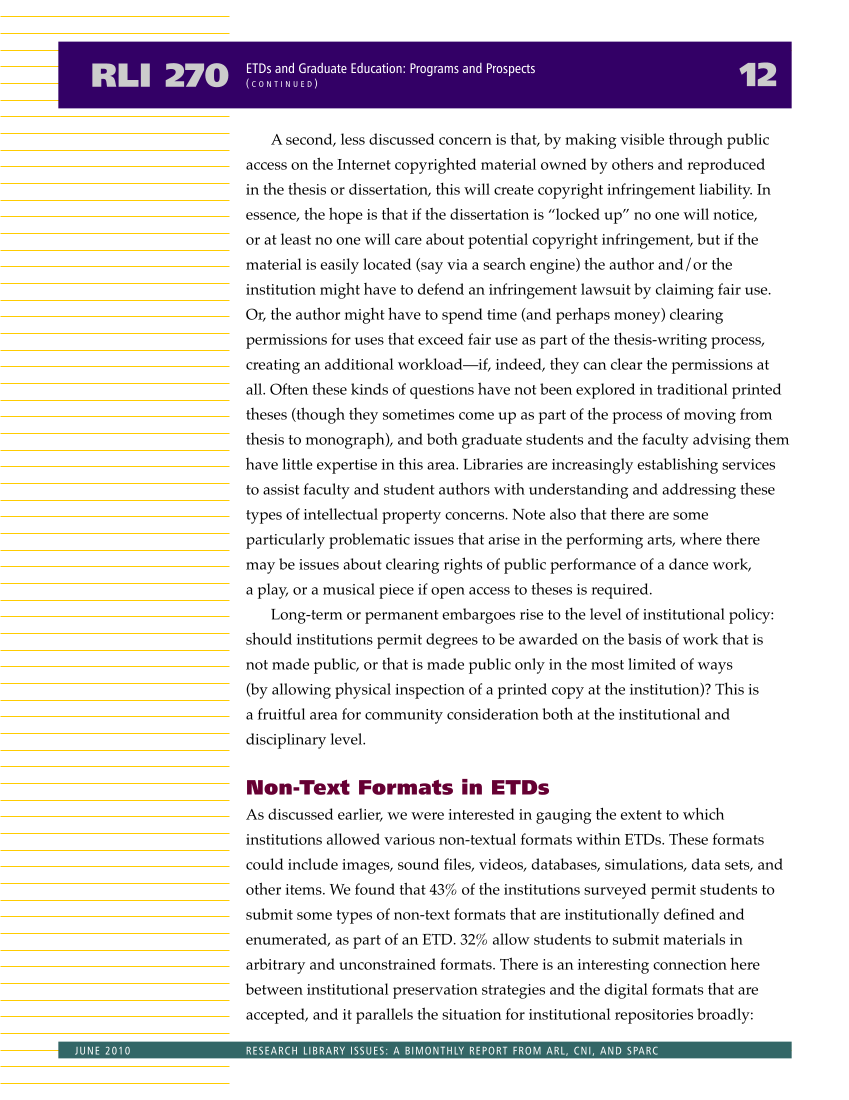A second, less discussed concern is that, by making visible through public access on the Internet copyrighted material owned by others and reproduced in the thesis or dissertation, this will create copyright infringement liability. In essence, the hope is that if the dissertation is “locked up” no one will notice, or at least no one will care about potential copyright infringement, but if the material is easily located (say via a search engine) the author and/or the institution might have to defend an infringement lawsuit by claiming fair use. Or, the author might have to spend time (and perhaps money) clearing permissions for uses that exceed fair use as part of the thesis-writing process, creating an additional workload—if, indeed, they can clear the permissions at all. Often these kinds of questions have not been explored in traditional printed theses (though they sometimes come up as part of the process of moving from thesis to monograph), and both graduate students and the faculty advising them have little expertise in this area. Libraries are increasingly establishing services to assist faculty and student authors with understanding and addressing these types of intellectual property concerns. Note also that there are some particularly problematic issues that arise in the performing arts, where there may be issues about clearing rights of public performance of a dance work, a play, or a musical piece if open access to theses is required. Long-term or permanent embargoes rise to the level of institutional policy: should institutions permit degrees to be awarded on the basis of work that is not made public, or that is made public only in the most limited of ways (by allowing physical inspection of a printed copy at the institution)? This is a fruitful area for community consideration both at the institutional and disciplinary level. Non-Text Formats in ETDs As discussed earlier, we were interested in gauging the extent to which institutions allowed various non-textual formats within ETDs. These formats could include images, sound files, videos, databases, simulations, data sets, and other items. We found that 43% of the institutions surveyed permit students to submit some types of non-text formats that are institutionally defined and enumerated, as part of an ETD. 32% allow students to submit materials in arbitrary and unconstrained formats. There is an interesting connection here between institutional preservation strategies and the digital formats that are accepted, and it parallels the situation for institutional repositories broadly: RLI 270 12 ETDs and Graduate Education: Programs and Prospects ( C O N T I N U E D ) JUNE 2010 RESEARCH LIBRARY ISSUES: A BIMONTHLY REPORT FROM ARL, CNI, AND SPARC



































